Lamb and sheep meat, have you ever wondered about the difference? We’re here to shed some light.
Lamb, it’s juicy and tender. Sheep meat, or mutton, is robust and full-flavored. Every barbecue at our place sparks this debate.
Some swear by lamb’s subtle sweetness. Others prefer mutton’s rich depth. We’ve had our share of kitchen mishaps.
Choosing between them can feel like picking a favorite song. It’s tough. Our taste tests often end in a draw.
This is our take on the great meat riddle. Ready to dive in?

What is Lamb Meat?
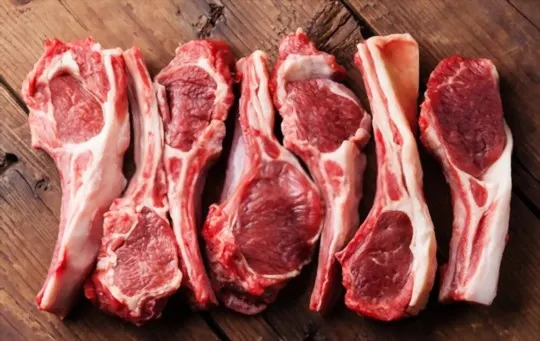
Lamb meat is the succulent flesh of young sheep, typically less than one year old.
It is generally more tender and flavorful compared to mature sheep meat.
Lamb meat has a distinct taste and aroma that sets it apart from other red meats.
It is also rich in protein, iron, vitamin B12 and other essential nutrients.
Due to its nutrient profile and distinct taste, lamb meat has become a popular choice for various dishes across the globe.
When it comes to cooking with lamb meat, there are varied cuts available such as leg, shoulder, chop and rack.
Each cut has its unique flavor profile and requires different cooking methods for optimal results.
The best way to cook lamb meat is by roasting or grilling it at a high temperature.
Marinating the meat beforehand adds additional flavor.
Moreover, lamb meat is widely used in many cuisines across the world including Mediterranean, Indian, Chinese and Middle Eastern dishes.
Its versatility lends itself well to stews, curries, kebabs and even burgers.
What is Sheep Meat?
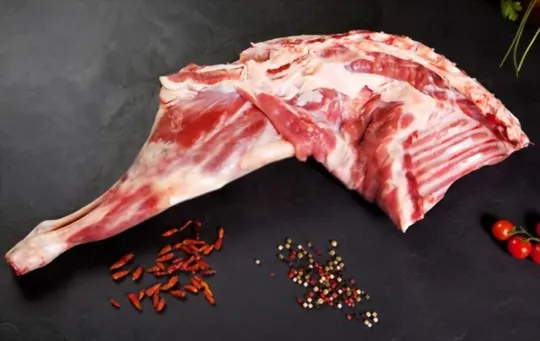
Sheep meat is the flesh of sheep that are raised for their meat.
It is a popular protein source in many countries and has been consumed for centuries.
The nutritional value of sheep meat is similar to lamb, but it has a stronger flavor due to the age of the animal.
Sheep meat can be cooked and prepared in various ways such as roasting, grilling or stewing.
When compared to lamb, sheep meat is generally less expensive and has a lower fat content due to its older age.
However, it also tends to be tougher and needs longer cooking times to make it tender.
Despite this, many people prefer the richer taste of sheep meat over lamb.
It’s worth noting that there are many different breeds of sheep, each with their unique characteristics which affect their meat quality.
Some popular breeds known for their excellent quality meat include Dorset Down, Hampshire Down, and Suffolk.
Overall, whether you choose lamb or sheep meat comes down to personal taste preference and how much you’re willing to spend on your protein source.
Both options offer nutritious benefits and can be incorporated into various dishes.
Differences Between Lamb and Sheep Meat
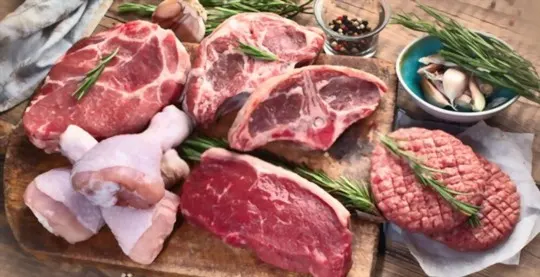
When considering the meat of sheep and lamb, there are important variations to consider.
Both have their unique qualities that might be more suited for certain cooking styles or tastes.
One major distinction is age–lamb comes from younger animals while sheep meat typically comes from older ones.
This difference in age corresponds to variations in tenderness, flavor intensity, and fat content.
While lamb is leaner and has a milder taste, sheep meat is more robust with higher fat content.
Additionally, different cuts of each type of meat offer distinctive flavors; for example, lamb chops are known for their delicate texture while racks of lamb are favored for special occasions.
Moreover, it’s worth noting that farming practices can also influence the quality and flavor of both types of meat.
Where the animal grazes and their diet can make a remarkable difference in the final product’s taste.
Sheep often roam freely on larger spaces such as hillsides while lambs tend to be raised on smaller farms or in simply smaller pens.
Age of the Animal
Younger animals tend to have more tender and succulent meat, which is the case with lamb meat as compared to sheep meat.
The age of the animal plays a crucial role in the texture, taste and nutritional value of animal-derived food products.
Lamb meat is obtained from young sheep that are less than a year old, while sheep meat comes from mature animals that are over a year old.
In addition to being more tender than sheep meat, lamb has a milder and sweeter flavour.
Younger animals have thinner bones and less fat, which results in healthier and leaner meat.
Sheep meat, on the other hand, is richer in protein but tends to be tougher due to the higher presence of collagen.
It also has a distinct taste that some people prefer over lamb.
It’s worth noting that the breed of the animal and their diet also impact the flavour and quality of the meat.
Factors such as feed, exercise levels, and living conditions can affect the nutritional value of both lamb and sheep meats as well.
Overall, if you prefer tender, mild flavoured and leaner meat, lamb might be your best option.
However, if you enjoy stronger flavours or require higher protein intake, then sheep meat could be an excellent choice for you.
Flavor and Tenderness
The taste and quality of meat are important factors when deciding between lamb and sheep.
Variations in flavor and tenderness depend on several factors, such as age, diet, breed, and processing methods.
It is essential to choose the right cut depending on your preference for texture, juiciness, and flavor intensity.
This can affect cooking times and methods as well.
For instance, younger lambs have tender meat with a sweeter taste than mature sheep.
Lamb is also more delicate in texture compared to sheep meat that tends to be firmer and slightly gamy in flavor.
However, some people prefer the intense and robust flavor of mature sheep meat that has been well-hung or aged for several weeks.
Both options can be enjoyed in various recipes – from stews to curries to grills – with complementary spices.
Furthermore, the best way to determine the quality of lamb or sheep meat is by checking its color, marbling fat, smell, and freshness.
The ideal color should be pinkish-red with white fat.
A foul odor or slimy texture is a sign of spoilage or bacterial growth.
Cooking Methods
Cooking techniques to enhance the flavor of lamb and sheep meat differ.
The best way to cook lamb depends on the cut, while sheep meat is generally slow-cooked.
Grilling is an excellent option for chops and kebabs, while oven-roasting works well for leg and shoulder cuts.
Conversely, sheep meat needs more moist cooking methods like stewing or braising to break down its tough fibers.
Other options include sautéing or making a savory pie with diced meat inside.
Cuts of Meat
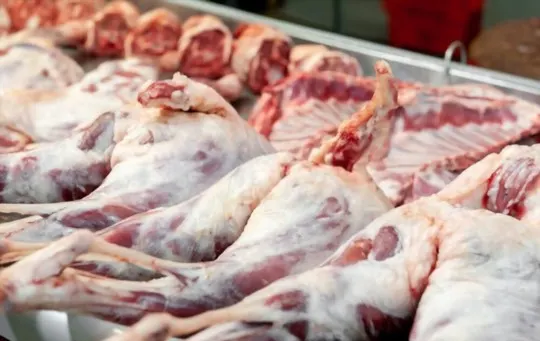
Different types of meat come from different parts of the animal, and each cut varies in quality, tenderness, and flavor.
Therefore, butchers use various meat-cutting techniques to separate the meat into smaller cuts.
By using a set of standard practices, they ensure that each cut is consistent in appearance and quality.
When it comes to lamb or sheep meat, various techniques are used depending on the desired cut.
For instance, lamb chops are typically obtained by making a slice perpendicular to the backbone or cutting through the rib bones.
Meanwhile, leg cuts can be bone-in or boneless and can weigh anywhere between 4-8 pounds.
It’s worth noting that some cuts can be very tender while others can be much tougher due to their use in bearing weight throughout the animal’s lifetime.
As such, choosing the right cut is critical for an optimal culinary experience.
Nutritional Comparison: Lamb Meat vs Sheep Meat
Comparing the Nutritional Value of Lamb Meat and Sheep Meat can reveal which meat is a superior option.
Both meats offer a rich source of protein, vitamins, and minerals.
However, when considering their nutritional value, it is essential to look at their differences.
Lamb meat contains more calories, saturated fat, and cholesterol than sheep meat.
While sheep meat has a higher amount of vitamin B12 and zinc as compared to lamb meat.
Moreover, lamb meat contains high amounts of conjugated linoleic acid (CLA).
CLA can potentially prevent cancer and reduce body fat.
It is important to note that both meats have unique benefits that make them valuable for inclusion in one’s diet plan.
For those looking for a weight loss-friendly diet or maintenance, sheep meat can be an excellent option due to its lower calorie content.
On the other hand, if supporting muscle growth or maintaining body processes are the primary goals then, lamb meat might be a better alternative.
Environmental and Ethical Considerations
Concerns Regarding Environmental Impact and Animal Welfare.
When deciding between lamb and sheep meat, it is crucial to consider the environmental and ethical implications of your choice.
The impact on the environment from livestock production is well documented, with greenhouse gas emissions, water usage and land use being major factors.
Additionally, animal welfare concerns center around humane treatment throughout the lifecycle of the animal.
In terms of environmental considerations, it is important to note that sheep and lamb both have a significant carbon footprint and contribute to greenhouse gases production.
However, farming practices can vary greatly in their environmental impact.
For example, grass-fed livestock tend to have a lower carbon footprint compared to grain-fed animals.
Also, some farms prioritize sustainable practices such as regenerative agriculture or utilizing renewable energy sources.
Regarding animal welfare, lambs are generally raised specifically for meat production whereas older adult sheep may also be used for wool.
As with any livestock farming, it is essential that animals are treated humanely throughout their lives including access to space, food/water and healthcare.
Overall, choosing between lamb and sheep meat involves analyzing various factors such as environmental impact and animal welfare concerns associated with each option.
It’s imperative for consumers to examine farming practices used by individual suppliers before making their decision regarding which type of meat they consume.
Which is a Better Option: Lamb or Sheep Meat?
When it comes to choosing between lamb and sheep meat, the decision is not straightforward.
Both types have unique qualities that may suit different individuals.
Taste preference, cooking methods, and nutritional needs must all be considered.
While both are flavorful and high-quality sources of protein, lamb meat is leaner and more tender than sheep meat.
This makes it an excellent choice for those who want to avoid excess fat intake but still enjoy delectable flavors.
Unlike lamb meat, sheep meat contains a higher amount of connective tissue, which requires slow cooking techniques to make it tender enough to eat comfortably.
Therefore, if you have ample time and prefer a burlier flavor profile, then sheep meat could be your go-to option.
Popular Lamb and Sheep Meat Dishes
This article provides an insight into the differences between lamb and sheep meat, in terms of taste, texture, nutritional value and cooking methods.
Exploring the various dishes made with these meats, lamb lends itself well to kebabs, stews and roasts while sheep meat is best suited for curries and broths.
Both meats offer distinct flavours but require different preparation.
It is important to note that sheep meat is commonly used in Middle Eastern or Asian cuisine while lamb is popularly eaten worldwide.
Understanding the variations between these two meats can help one make an informed decision when preparing a menu.
Conclusion
After analyzing the nutritional value, versatility, taste and cost of both lamb and sheep meats, it can be concluded that they are both excellent options for consumers.
In terms of nutritional value, lamb meat has higher levels of iron and vitamin B12 while sheep meat contains more protein and omega-3 fatty acids.
When it comes to taste, lamb is considered more tender and delicate while sheep meat is typically richer in flavor.
Additionally, lamb is more expensive due to its lower availability whereas sheep meat is easier to find and more affordable.
Overall, choosing between these meats depends on personal preference and specific dietary needs.
It’s important to also note that the way these meats are prepared can greatly impact their taste, texture and nutritional profile.
From grilling to roasting to stewing, there are numerous ways to enjoy both lamb and sheep meats in a variety of dishes.
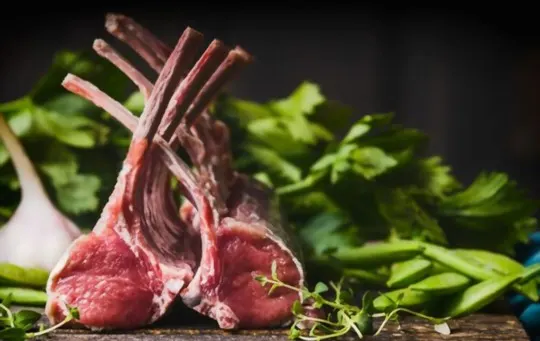
Lamb vs Sheep Meat: Which is a Better Option?
Ingredients
- Lamb meat
- Sheep meat
Instructions
- Choose between two items based on your preference and availability.
- Follow the cooking directions for your chosen option, using the appropriate ratio of ingredients.
- Prepare it according to your desired recipes.
- Incorporate them into your dish, adjusting the amount to suit your taste.
- Enjoy the unique taste experience and experiment with different dishes to explore their versatility.

Andrew Gray is a seasoned food writer and blogger with a wealth of experience in the restaurant and catering industries. With a passion for all things delicious, Andrew has honed his culinary expertise through his work as a personal chef and caterer.
His love for food led him to venture into food writing, where he has contributed to various online publications, sharing his knowledge and insights on the culinary world. As the proud owner of AmericasRestaurant.com, Andrew covers a wide range of topics, including recipes, restaurant reviews, product recommendations, and culinary tips.
Through his website, he aims to inspire and educate fellow food enthusiasts, offering a comprehensive resource for all things food-related.

Leave a comment